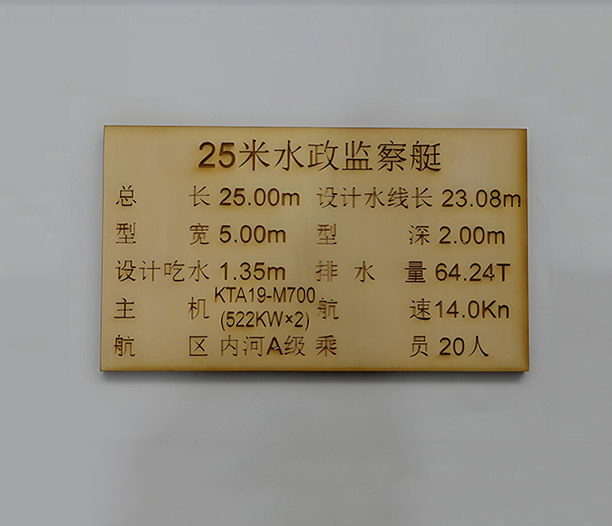When you stroll through a store in California, you might have noticed those small, often cryptic warning labels on products ranging from coffee cups to household items. These labels, mandated by state law, are more than just legal formalities—they represent a significant effort to protect public health. But what exactly do they entail, and why are they so prevalent? In this article, we delve into the world of California warning labels, breaking down their purpose, history, and real-world implications. Whether you're a shopper or a business owner, understanding these labels is crucial for navigating the marketplace safely and responsibly. Let's uncover the key aspects of California warning labels that everyone should know.

What Are California Warning Labels?
California warning labels are primarily associated with Proposition 65, officially known as the Safe Drinking Water and Toxic Enforcement Act of 1986. This law requires businesses to provide clear and reasonable warnings to consumers about exposures to chemicals that are known to cause cancer, birth defects, or other reproductive harm. The labels aim to inform the public about potential risks, allowing individuals to make educated decisions when purchasing products or entering certain environments. Unlike federal regulations, California warning labels often appear on a wide array of items, including food, electronics, furniture, and even recreational areas, making them a ubiquitous feature in the state. The warnings typically include statements like "This product contains a chemical known to the State of California to cause cancer," which have become familiar to residents and visitors alike. By highlighting these risks, California warning labels serve as a proactive measure to reduce exposure to hazardous substances, though their effectiveness and clarity are often debated.
The History and Legal Basis of California Warning Labels
The origins of California warning labels trace back to Proposition 65, which was passed by voters in 1986. This initiative was driven by growing public concern over toxic chemicals in the environment and their impact on health. The law empowers the state to maintain a list of harmful chemicals, which is updated regularly based on scientific evidence. Businesses operating in California must comply by providing warnings if their products or premises expose individuals to listed chemicals above safe harbor levels—thresholds that define significant risk. Over the years, the implementation of California warning labels has evolved through court rulings and regulatory adjustments, leading to more standardized warning formats. For instance, recent updates in 2018 introduced more specific language and icons to enhance clarity. This legal framework has made California a leader in consumer protection, but it has also sparked legal challenges and compliance issues for companies. Understanding this history is essential for grasping why California warning labels are so pervasive and how they've shaped public health policies.
Types of Products and Situations Requiring California Warning Labels
California warning labels are not limited to a single category of products; they apply to a broad spectrum of items and environments. Common examples include consumer goods like cosmetics, which may contain phthalates or lead; food and beverages, such as coffee and baked goods with acrylamide; and household products like cleaning supplies or furniture with formaldehyde. Additionally, warnings are required in workplaces, parking garages (due to vehicle exhaust), and even recreational areas where chemicals might be present. The criteria for labeling depend on whether a product contains one or more of the over 900 chemicals listed under Proposition 65 and if exposure exceeds the safe harbor level. This wide applicability means that California warning labels appear in everyday life, from a simple trip to the grocery store to visiting a public park. However, this breadth has led to criticism about "over-warning," where labels become so common that consumers might ignore them. By examining the variety of products covered, we can better appreciate the scope of California warning labels and their intent to cover diverse exposure scenarios.

Impact of California Warning Labels on Businesses
For businesses, complying with California warning labels involves significant considerations, including legal, financial, and operational aspects. Companies that sell products in California must conduct thorough testing to determine if their items contain listed chemicals and at what levels. If warnings are required, they must be displayed prominently on packaging, in stores, or online, which can increase production costs and lead to redesigns. Failure to comply can result in lawsuits, fines, and reputational damage, as private enforcers—often advocacy groups or individuals—can file claims against non-compliant businesses. This has led to a culture of litigation that some argue burdens small enterprises disproportionately. On the positive side, California warning labels encourage companies to reformulate products to be safer, fostering innovation and consumer trust. Many businesses now proactively adopt these warnings nationwide to streamline operations, highlighting the influence of California's regulations beyond state borders. Overall, the impact on businesses underscores the balance between consumer protection and economic practicality, making it a critical aspect of the California warning labels discussion.
Consumer Awareness and Response to California Warning Labels
From a consumer perspective, California warning labels are designed to empower individuals with knowledge about potential health risks. Studies show that these labels can influence purchasing decisions, with some shoppers avoiding products bearing warnings or seeking alternatives. However, the high frequency of labels has led to "warning fatigue," where people become desensitized and may not pay attention to the messages. Educational efforts by health organizations and government agencies aim to improve understanding, but the technical nature of the warnings—often listing complex chemical names—can be a barrier. Despite this, California warning labels have raised overall awareness about toxic exposures, prompting public discussions on environmental health and safety. Consumers are encouraged to research specific chemicals and consult resources like the Proposition 65 list to make informed choices. This dynamic between label visibility and consumer behavior reveals both the strengths and weaknesses of the system, emphasizing the need for continuous evaluation and potential reforms to enhance effectiveness.
Controversies and Criticisms Surrounding California Warning Labels
Despite their noble intentions, California warning labels are not without controversy. Critics argue that the labels are often too broad, leading to unnecessary alarms and confusion. For example, many products carry warnings even when the chemical exposure is minimal and poses no significant risk, which can undermine the credibility of the labels. The legal environment has also been criticized for fostering "bounty hunter" lawsuits, where plaintiffs target businesses for minor infractions, potentially diverting resources from genuine health threats. Additionally, some experts question the scientific basis for certain listed chemicals, suggesting that the thresholds for warnings may not always align with current research. These controversies have sparked debates about reforming Proposition 65 to make California warning labels more targeted and informative. Supporters, however, contend that the system has successfully reduced exposure to harmful substances and pushed industries toward safer practices. By exploring these criticisms, we gain a balanced view of the challenges facing California warning labels and the ongoing efforts to improve them.
The Future of California Warning Labels
Looking ahead, California warning labels are likely to evolve in response to technological advancements, scientific discoveries, and public feedback. Potential changes include digital warnings via QR codes that provide detailed information, updates to the chemical list based on emerging research, and efforts to harmonize state regulations with federal standards to reduce confusion. Environmental and health advocates are pushing for stricter enforcement and clearer language to combat warning fatigue, while business groups seek more predictable compliance guidelines. As global concerns about sustainability and health grow, California warning labels could serve as a model for other regions, but they must adapt to remain relevant and effective. By staying informed about these trends, consumers and businesses can better prepare for the future landscape of product safety and labeling.
California warning labels are a cornerstone of the state's approach to public health, offering vital information about chemical exposures while sparking important discussions on safety and regulation. From their legal roots in Proposition 65 to their impact on daily life and commerce, these labels embody a complex interplay of protection, education, and controversy. As we've explored, they cover a wide range of products, influence business practices, and shape consumer behavior, yet they face challenges that require ongoing refinement. By understanding the multifaceted nature of California warning labels, individuals can make more informed decisions, and stakeholders can contribute to a safer, more transparent marketplace. Whether you encounter these labels in a store or online, remember that they represent a continuous effort to balance risk awareness with practical reality.
Frequently Asked Questions (FAQ)
Q1: What is the main purpose of California warning labels?
A1: The primary purpose of California warning labels is to inform consumers about potential exposures to chemicals that are known to cause cancer, birth defects, or other reproductive harm, as mandated by Proposition 65. This allows individuals to make educated choices to reduce their risk.
Q2: Are California warning labels required on all products sold in the state?
A2: No, California warning labels are only required on products that contain one or more of the listed chemicals above the safe harbor levels defined by law. However, due to the broad range of chemicals and products covered, many items in California do carry these warnings.
Q3: How can businesses determine if they need to use California warning labels?
A3: Businesses should test their products for the presence of chemicals on the Proposition 65 list and assess whether exposure levels exceed safe harbor thresholds. Consulting legal experts or using compliance resources can help ensure they meet the requirements for California warning labels.
Q4: Do California warning labels apply to online sales?
A4: Yes, if a business sells products online to California residents, it must provide the required warnings on its website or during the checkout process, similar to physical stores. This ensures that consumers have access to the same safety information.
Q5: Why are there so many criticisms of California warning labels?
A5: Criticisms often stem from concerns about over-warning, which can lead to consumer desensitization, and the potential for abusive lawsuits against businesses. Some also question the scientific basis for certain chemical listings, arguing that the labels may not always reflect actual health risks accurately.






